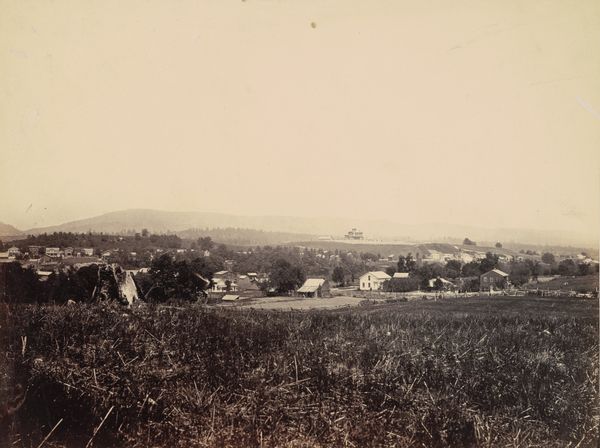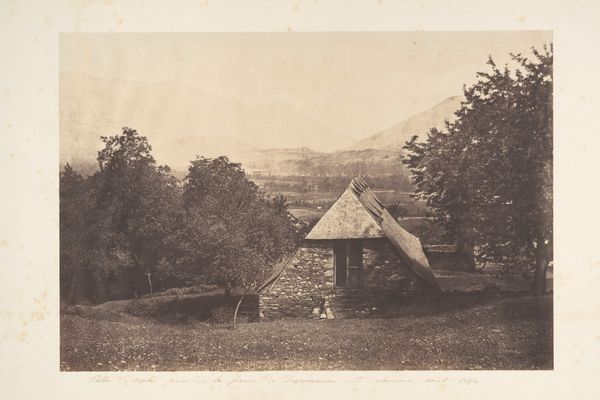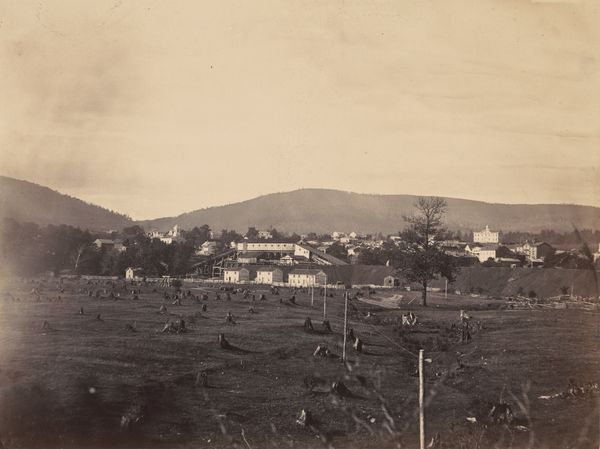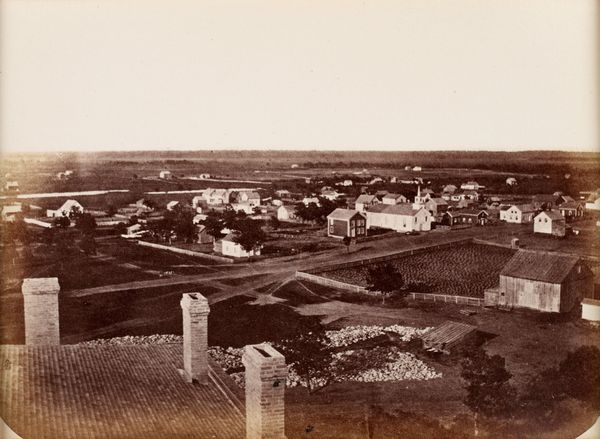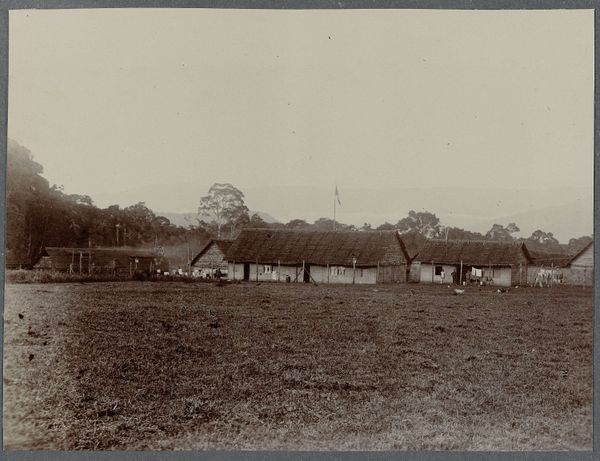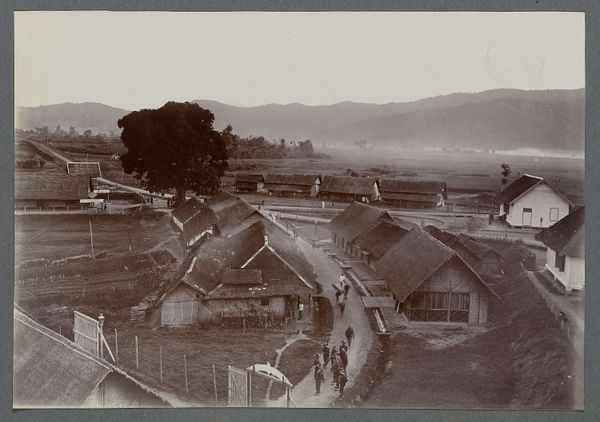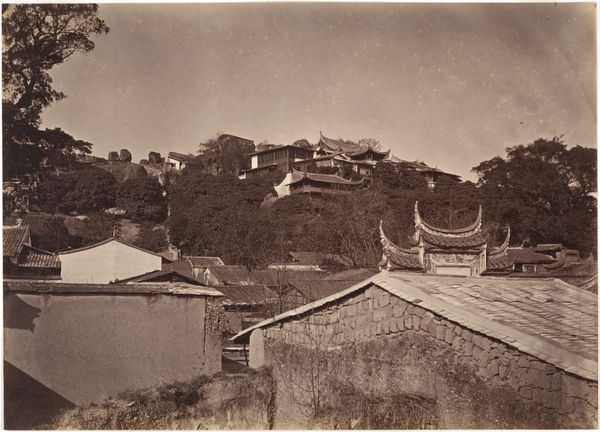
#
shading
#
natural shape and form
#
photo restoration
#
charcoal drawing
#
charcoal art
#
old-timey
#
19th century
#
charcoal
#
watercolor
#
shadow overcast
Dimensions: image: 43.2 × 52.1 cm (17 × 20 1/2 in.) mount: 50 × 60.5 cm (19 11/16 × 23 13/16 in.)
Copyright: National Gallery of Art: CC0 1.0
Curator: "Across Country from West Portal, N.J.," a photograph by William H. Rau, taken around 1895, presents a pastoral scene of farmlands. What’s your initial take? Editor: A palpable stillness. The monochromatic palette, verging on sepia, casts an aura of calm. It reminds me of a faded memory. Curator: Yes, the tonal range invites a feeling of quietude, and perhaps a touch of nostalgia. The overcast sky emphasizes the natural shape and forms, especially of the buildings and surrounding fields. In terms of symbolism, could we read into this rural setting something about American identity at the turn of the century? Editor: The repetition of gabled roofs, the visible timber – it all underscores a society rooted in labor and material production. Look closely at those shadowed spaces – a literal and symbolic weight bearing down, isn't it? It isn't a sanitized, idealized landscape. Curator: Interesting perspective. The horse grazing, seemingly undisturbed in the lower-left field, could represent something similar - animal labor tied to production on a small scale. Note how the photographer, Rau, chose to depict the farmers on the edge of town, which suggests more of the reality of working the fields with manual means of production rather than any kind of idyllic notion. Editor: Rau was keenly aware of the impact of new infrastructure, I would surmise. While this appears simple, rural life was being affected as consumerism began. But he highlights the traditional means, emphasizing craft and agriculture over technology. Curator: It’s compelling to consider how an image, seemingly so straightforward, engages with those layers of meaning. I do also wonder if viewers today, removed from the realities of 19th-century farm life, respond to it primarily through sentimentality. Editor: Perhaps. But it’s also a record. Consider the photographic process itself—a chemical and material endeavor shaping how we understand the past. Curator: True, every step reveals social information, not just an aesthetic impression. Well, that offers food for thought indeed. Editor: A fruitful perspective shift.
Comments
No comments
Be the first to comment and join the conversation on the ultimate creative platform.
